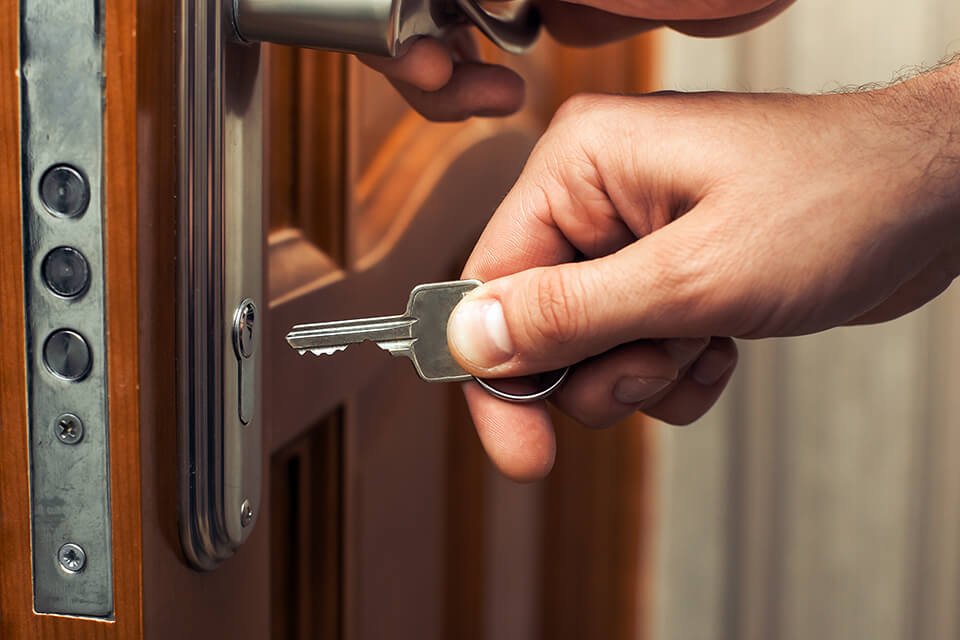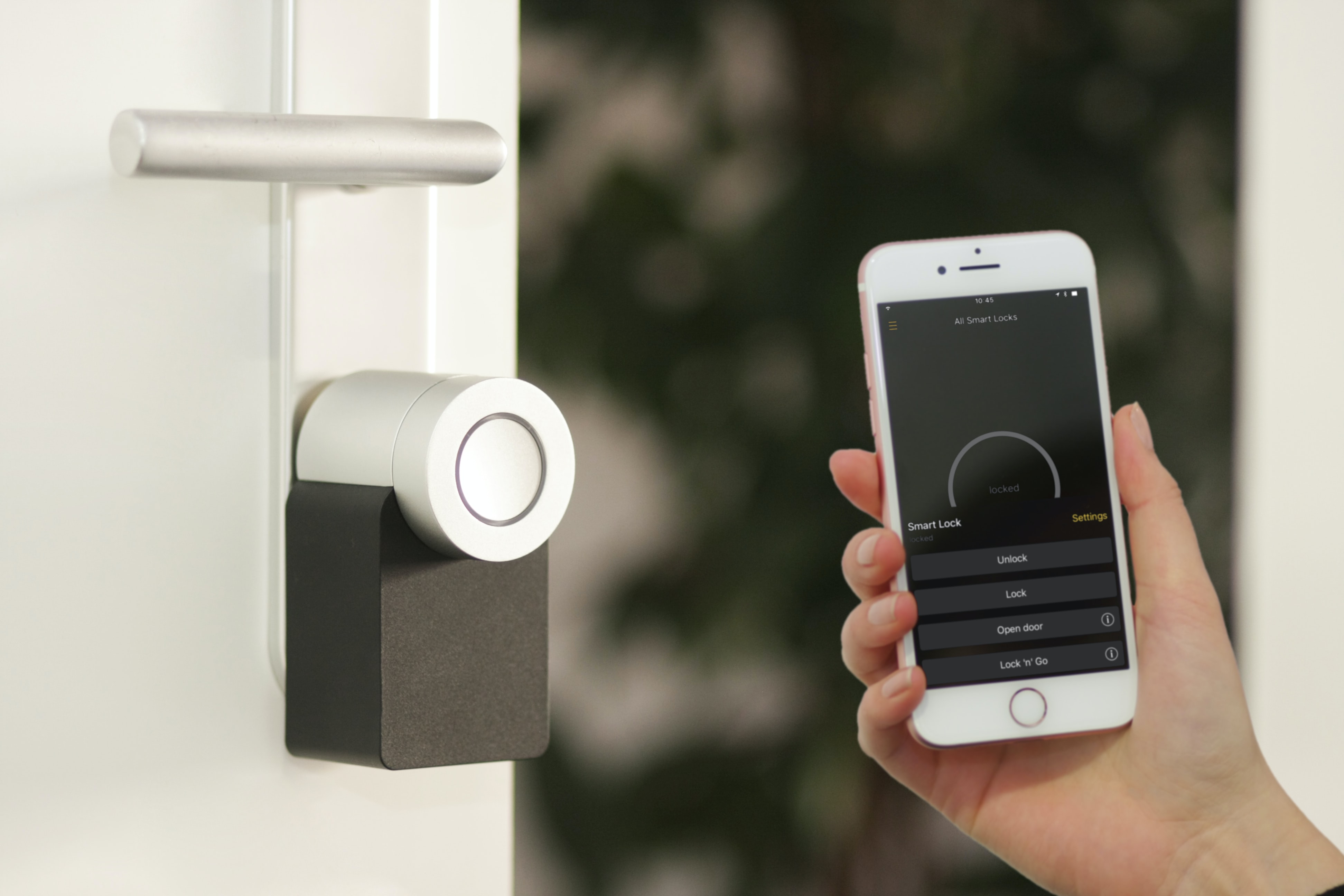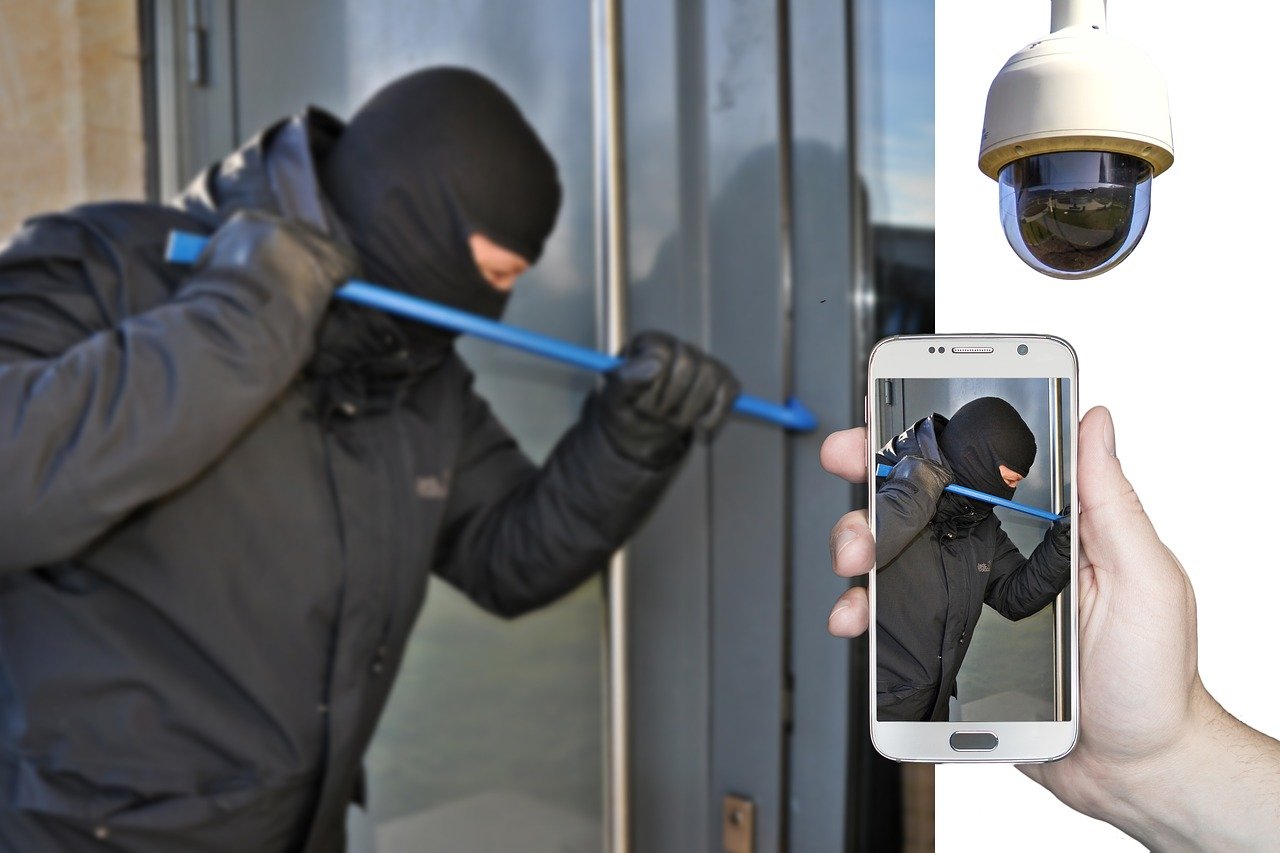Express Doors Direct ▸ Blog ▸ How to Fix a Sticky Lock on Your Door
Last updated on March 7th, 2022 at 03:43 pm
Locks are essential to our homes for security and making you feel safe. Locks are one of those things that you take for granted and don’t think too much about the maintenance of. As soon as they stop working as they should you can start to panic and you do realise how important door locks are to you.
One of the commonest lock problems is a sticky lock. Luckily, with most sticky door lock problems can be fixed relatively quickly by using a variety of methods. There are also things you can do to prevent lock problems.
Why Is My Key Sticking in the Lock?
When a key gets stuck in a lock it is usually because the lock needs to be lubricated. The lock pins can get covered in dirt that has gradually got inside the lock, usually by the key. Just think of where your key might have been – kitchens, pockets, gym bags – all of these places can result in dust and dirt on your key that then gets transferred inside the lock, causing you a problem.
Take Early Action
If your key starts to stick in the key barrel this is the time to take notice. Having a key that occasionally sticks in a lock is an inconvenience, having a key that snaps off in lock after getting permanently stuck in a lock is an entirely different matter and may require a locksmith!
Check the Key
If your key begins to stick when you are opening or closing a lock the first thing you should do is check if the key is bent. Just a slight bend in a key can affect a key’s ability to function correctly. You can straighten a bent key using pliers or a vice, but we’d recommend erring on the side of caution and having a new key cut from a spare at a locksmiths.
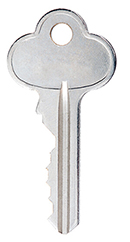
Check the Key Barrel
Is the key barrel sat firmly in the door? If the barrel is loose or poorly fitted, this could be affecting your ability to unlock your door without any problems. It will be worth checking any screws that help keep the lock or door handle in place are tightened.
How Do I Lubricate a Door Lock?
It’s important to choose the right way of lubricating door lock. You do not want to make the situation worse. Our number one method and the choice of locksmiths is graphite powder. But there are other lubricants you can safely use.
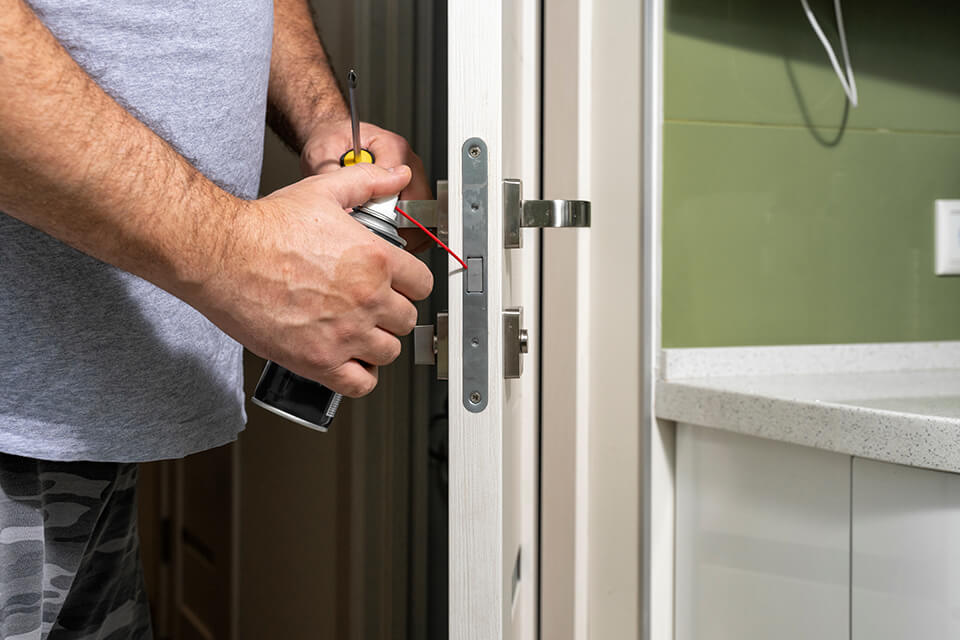
Use Graphite Powder
Graphite powder is an excellent lubricant and a great way to fix a lock that is becoming difficult to unlock.
Powdered graphite lubricant can be bought in small bottles made of soft plastic with a nozzle, meaning it is easy to squirt a small amount of lubricant into the lock. If you choose this method you can also squirt a little powder onto the key as well.
A few tips for using powdered graphite for lubricating a lock:
- Less is more – use it sparingly as the powder is very fine and goes everywhere.
- Wear disposable gloves
- At first try squirting graphite powder on the key itself.
- If you are using it outside try to do it on a calm day.
Use a Pencil
If you don’t have access to graphite powder, this might be the right time to have a pencil handy! You can fix a key that sticks in a door lock by rubbing the surface of the key with the pencil lead. This is because the lead in pencils is of course not lead but graphite, and the graphite should act as a lubricant.
Use GT85 Lubricating Spray
GT85 Cleaner is perfect for cleaning and lubricating door locks and is widely available in supermarkets, hardware stores and online. The lubricant in GT85 is PTFE (polytetrafluoroethylene), a silicone element that will also repel water. GT85 is sold with a small plastic tube which will allow you to easily direct the spray into your lock.

Our handy tips to easily lubricate a sticky lock with GT85:
- Put the little plastic straw in the cans nozzle and squirt the GT85 straight in the lock.
- Wear gloves as there will be excess liquid that can dribble out of the lock
- Have an old rag handy to prevent any excess liquid dripping on surfaces you may want to protect.
- If your lock is really sticky you may need multiple applications of GT85 to successfully lubricate it.
- Taking the lock out of the door might be necessary to apply the GT85 and turn the lock upside down to let excess liquid and dirt drip out.
Use a Locksmith
At the end of the day, if a key is firmly stuck in a lock and a lubricant won’t help shift it, it could be the time to call in a locksmith. Any attempt to use too much force to remove the key could result in it snapping – and take it from our experience, that is an inconvenient and expensive thing to happen and one to avoid!

Should I use WD40 to lubricate door locks?
The simple answer is you should not use WD40 to lubricate locks. WD-40 is one of the solvent-based lubricants and does not contain any lubricant and over time can make your lock even stickier by gumming the lock up. So even though it’s very tempting if you have a can of WD-40 handy (and let’s face it, most of us have!) to just give your lock a quick squirt, please don’t! The same applies with bicycle chains, you can clean them with GT-85, but using WD-40 will attract dirt over time.
Hopefully, we’ve helped you to solve your problem with your external door lock!
Related Posts:
Seeking contrast between cosy cottage vibes and modern aesthetics, Keeley needed the best black #InternalDoors to complement her living area.
The challenge? Finding a contemporary design that kept the space light and airy. We had the ideal solution: Greenwich Black Clear Glass Internal Doors by LPD Doors.
Learn more about this project at expressdoorsdirect.co.uk/case-studies/industrial-doors-for-a-modern-cottage-living-space
@followers

 Stylish #PatioDoors are often referred to as the ultimate summer home essential. But how can you use them to keep your property airy and cool as we approach the heat of summer?
Stylish #PatioDoors are often referred to as the ultimate summer home essential. But how can you use them to keep your property airy and cool as we approach the heat of summer?
 Oak cottage style Farley doors from Climadoor are on SALE now! Upgrade your space
Oak cottage style Farley doors from Climadoor are on SALE now! Upgrade your space 
@followers






For us, it's throwing open the #PatioDoors and enjoying the fresh air!
Get ready for endless summer enjoyment with quality designs now available at an even lower price.
Find the perfect style for your home at expressdoorsdirect.co.uk and save big


 Dreaming of long, lazy weekends in the garden? Make the most of your outdoor space with the right #PatioDoors. From bifold to sliding we break down the latest trends...
Dreaming of long, lazy weekends in the garden? Make the most of your outdoor space with the right #PatioDoors. From bifold to sliding we break down the latest trends...




















































